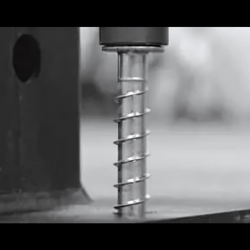Bolting Down Your Gym Equipment: Ensuring Safety in Commercial Spaces
Mar 22nd 2024
In the bustling world of fitness, safety should always be a top priority. Whether you're a gym owner, manager, or simply a fitness enthusiast, the importance of properly securing gym equipment cannot be overstated. Not only does it safeguard the users, but it also protects the reputation and financial well-being of the establishment. In this blog post, we'll delve into the necessity of bolting down gym equipment in commercial spaces, exploring legal precedents within the fitness industry spurred by lawsuits and injuries.
Why Bolting Down Gym Equipment Matters
Imagine this: you're in the middle of an intense workout session, pushing your limits on the bench press or tackling a challenging set on the squat rack, when suddenly, the equipment wobbles or shifts unexpectedly. Such incidents not only disrupt the flow of your workout but can also pose serious safety hazards. Loose or unsecured gym equipment is a recipe for disaster, increasing the risk of accidents, injuries, and potential lawsuits.
In a commercial gym setting, where equipment is subjected to heavy usage by numerous individuals, ensuring stability is paramount. Bolting down gym equipment serves as a proactive measure to mitigate risks associated with equipment malfunction or instability. By firmly anchoring machines and racks to the floor, you provide users with a secure environment conducive to safe and effective workouts.
Legal Precedents and the Fitness Industry
Over the years, the fitness industry has witnessed several legal cases stemming from gym-related injuries. While not all incidents are directly attributed to improperly secured equipment, negligence in equipment maintenance and safety measures can significantly contribute to liability issues for gym owners and operators.
One notable legal precedent involves cases of gym equipment tipping over during use, causing injuries ranging from minor bruises to severe fractures. In such instances, plaintiffs have successfully argued that the gym failed to uphold its duty of care by neglecting to secure equipment adequately. These cases have resulted in substantial settlements or verdicts against gym facilities, highlighting the legal ramifications of insufficient safety protocols.
Furthermore, industry regulations and standards emphasize the importance of maintaining a safe workout environment. Failure to comply with these guidelines not only jeopardizes the well-being of gym patrons but also exposes businesses to legal repercussions. By bolting down gym equipment in accordance with industry standards and manufacturer recommendations, gym owners demonstrate their commitment to safety and reduce the likelihood of liability issues.
Best Practices for Bolting Down Gym Equipment
When it comes to bolting down gym equipment, adherence to best practices is key. Here are some essential guidelines to follow:
1. Consult Manufacturer Guidelines: Always refer to the manufacturer's instructions for securing each piece of equipment. Follow recommended techniques and use appropriate hardware to ensure proper anchoring.
2. Evaluate Floor Surface: Assess the condition and composition of the gym floor to determine the most suitable anchoring method. Concrete floors typically require drilling and expansion anchors for optimal stability.
3. Professional Installation: Entrust the installation process to qualified professionals with experience in gym equipment assembly and anchoring. Proper installation minimizes the risk of errors and ensures maximum safety.
4. Regular Inspections: Implement a routine inspection schedule to assess the condition of bolts, anchors, and equipment attachments. Promptly address any signs of wear, damage, or loosening to maintain structural integrity.
5. Educate Staff and Users: Train gym staff on safety protocols, including the importance of securely bolting down equipment. Additionally, educate gym members on proper equipment usage and encourage reporting of any safety concerns.
Conclusion
In the dynamic landscape of commercial fitness facilities, prioritizing safety is non-negotiable. Bolting down gym equipment serves as a fundamental step in creating a secure environment for users, minimizing the risk of accidents and liabilities. By adhering to industry standards, legal precedents, and best practices, gym owners can uphold their duty of care and foster a culture of safety within their establishments. Remember, when it comes to gym safety, prevention is always preferable to litigation. So, let's ensure that every workout is not only effective but also injury-free. Please call us here at CSM FITNESS if you have any questions or are in need of assistance with getting a bolt down at your gym.

